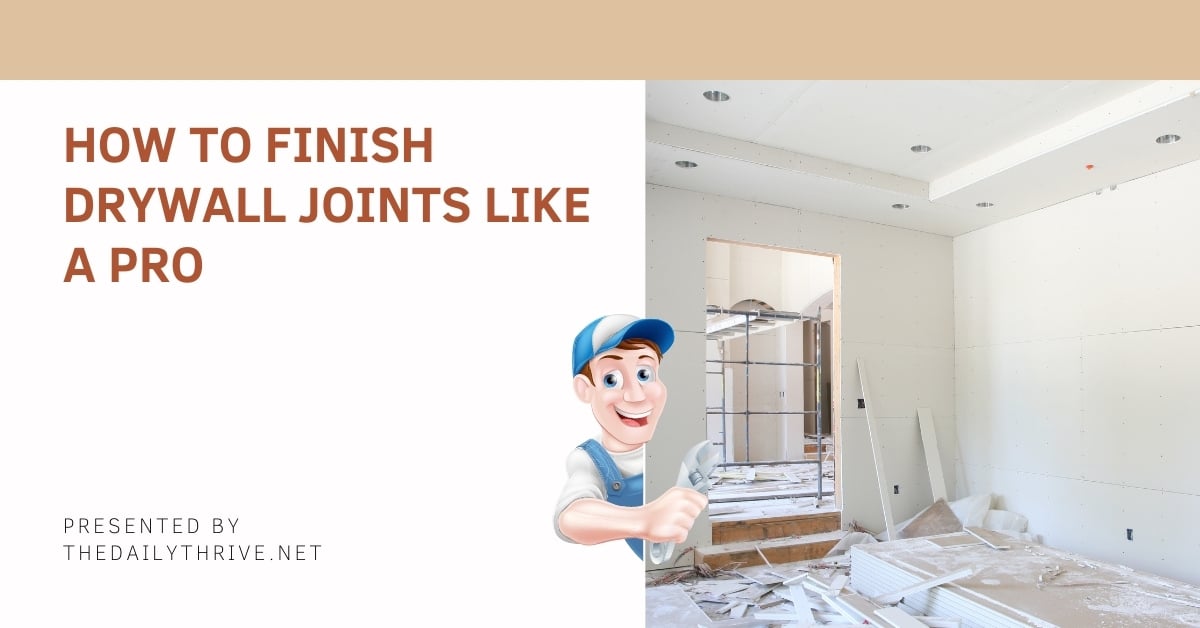After hanging your drywall, you’re ready for the most critical part of the drywall installation process- taping and finishing the joints between wallboards, also known as mudding. Although it can be tedious and frustrating, it affects the final appearance of the job greatly. You need to take your time when finishing drywall joints and do it right.
No matter how hard you try to avoid them, you’ll always run into at least one or two butt joints when you’re putting up drywall. In a perfect world, there would be no joints in drywall. In real life, this can’t be helped because when a contractor or other person who installs drywall cuts a drywall panel, which is often necessary, the cut edge isn’t tapered.
Any experienced contractor will tell you that one of the most frustrating parts of the job is trying to hide the mounds that butt joints always make. We’ll show you how to finish your drywall joints like a pro in this guide.
Finishing drywall joints has three steps to it.
- Filler Coat: Applying a joint compound filler coat to joints and nailheads. This is reinforced with joint paper tape. When dry, this is sanded down.
- Second Coat: The joints are coated and sanded a second time 24 hours after the first coat.
- Finish Coat: After another 24 hours, applying of a watered-down, tempered finish coating of joint compound. If done properly, this last coating should have no need for sanding.
Tips: In order to work from easiest joints to hardest, follow this order for applying the joint compound: start with nailheads, then valley joints (the longitudinal joints), inside corners, outside corners, and lastly, the butt joints.
Before starting mudding, check to make sure none of the wallboards are loose- some nails may have worked their way out a little during hammering on adjacent nails. Push the centers and edges of all the wallboards and watch for any movements around the nails, particularly on ceilings. Any looseness should be corrected with extra nails.
Also, check for excessive gaps between boards. Anything between ¼ inch and ½ inch should be filled with compound and left to dry for 24 hours. Any spaces between sheets of over ½ inch need to be filled with wallboard. Cut a strip of drywall and glue it in place, letting the dry glue overnight.
Pro Drywall Finishing Tips
Here are a few drywall finishing tips that can help you do a good finishing job.
Scrape Your Lid
When you open a bucket of joint compounds, clean the inside of the lid by scraping off any compound. Otherwise, the compound on the lid dries and crumbles off into the fresh compound in the bucket, causing gouges and lumps in your joints when you try to smooth them out with your knife.
Handle with Care
Your joint knives need to be kept in good condition, so use them carefully and avoid dropping them. If the blades get bent or nicked, the knife will be incapable of properly finishing a joint. After use, they should be cleaned and dried thoroughly. Don’t let the joint compound dry on the blade, and dry them after washing. You don’t want them to rust.
Clean up Spills
Spilled or dripped compounds can be cleaned off easily enough, even after drying, but a messy job area is an unsafe one, and if you step in a patch of a wet compound, you could slip and hurt yourself falling.
Final Words
Is drywall joints hard to finish? It’s not a hard task to do. To finish drywall like a pro, you only need a few tools. Before you can finish the drywall joints, the wallboard needs to be in place. Keep in mind that the ends of a sheet of drywall are slightly angled, which makes it much easier to finish joints. It will be tempting to use small pieces of wood to finish hanging the boards, but you’ll hurt yourself in the long run.

